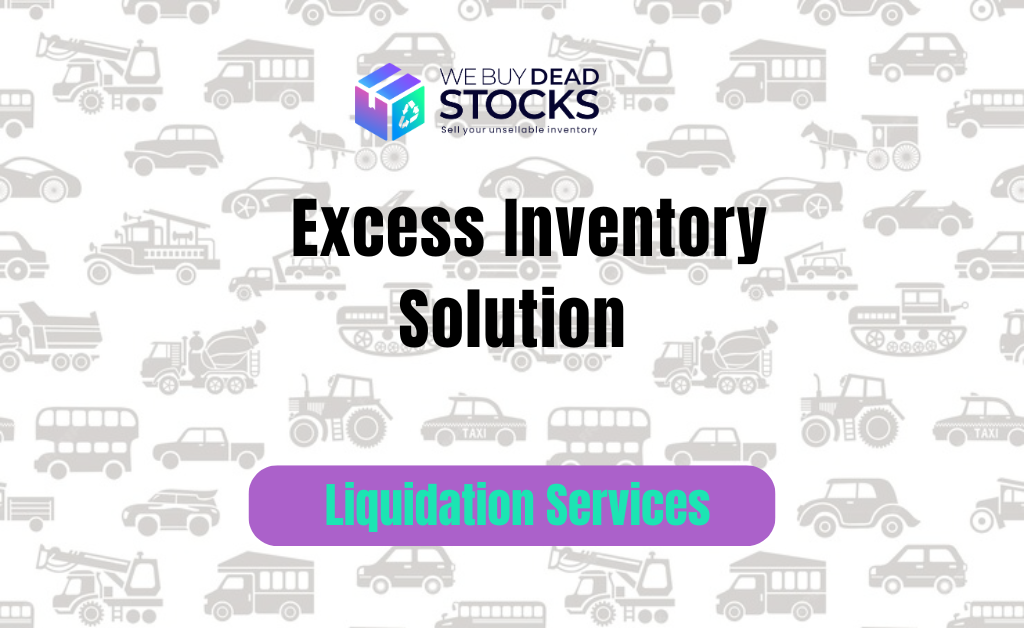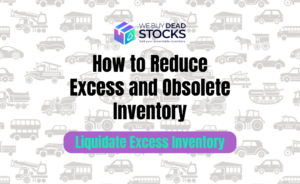Welcome to our blog dedicated to excess inventory liquidation and inventory liquidation services. In the fast-paced world of commerce, managing inventory is a crucial aspect of any business operation. However, despite the best efforts of companies to forecast demand accurately, fluctuations in consumer preferences, market trends, and unforeseen circumstances often lead to the accumulation of excess inventory. So, if you’re wondering how to liquidate inventory, you’re in the right place!
Understanding Excess Inventory 🧐
Causes of Excess Inventory Buildup
Excess inventory, the surplus accumulation of goods beyond what can be efficiently sold, can stem from various factors:
- Overordering: Businesses sometimes overestimate demand or succumb to enticing bulk purchase deals, leading to excessive stockpiling.
- Fluctuating Demand: Market shifts, seasonal variations, or sudden changes in consumer preferences can catch businesses off guard, leaving them with surplus liquidation items.
- Production Challenges: Supply chain disruptions, manufacturing errors, or delays can result in an overproduction of goods that surpass demand.
Consequences of Excess Inventory 🚨
The repercussions of surplus inventory extend beyond mere inconvenience:
- Increased Storage Costs: Excess inventory occupies valuable warehouse space, incurring additional storage expenses and potentially leading to the need for off-site storage solutions.
- Cash Flow Strain: Capital tied up in surplus inventory limits liquidity and can hinder essential business operations, such as paying bills or investing in growth opportunities.
- Risk of Obsolescence: Idle inventory runs the risk of becoming obsolete or outdated, diminishing its value and potentially leading to significant losses.
Impact on Businesses
The ramifications of excess inventory reverberate throughout a business’s operations:
- Diminished Profitability: Inability to move surplus inventory translates to reduced sales revenue and profitability, impacting the bottom line.
- Operational Inefficiencies: To liquidate excess inventory demands significant resources and manpower, diverting attention from core business activities and diminishing operational efficiency.
- Brand Reputation Risks: Persistent inventory surplus liquidation can erode consumer confidence and tarnish a brand’s reputation, signaling inefficiency and lack of adaptability.
The Process of Inventory Liquidation
Definition of Inventory Liquidation 💡
Excess Inventory liquidation refers to the strategic process of selling excess or surplus stock to buyers in order to free up capital and optimize warehouse space. It’s a critical step in inventory management aimed at preventing financial losses and maximizing profitability.
Importance of Timely Liquidation
Timely excess stock liquidation is paramount for businesses facing excess stock. Delaying the liquidation process can lead to various negative consequences:
- Increased Holding Costs: The longer surplus inventory sits idle, the more resources are consumed in terms of storage, insurance, and maintenance, eating into profits.
- Risk of Depreciation: Excess inventory runs the risk of losing value over time, especially in industries with rapidly changing consumer preferences or technological advancements.
- Cash Flow Constraints: Capital tied up in excess inventory restricts liquidity, hindering businesses from investing in growth opportunities or meeting financial obligations.
Strategies for Effective Liquidation 💯
To streamline the excess inventory liquidation process and maximise returns, businesses can employ several strategies:
- Identify Target Buyers: Research on how to liquidate inventory. Identify potential buyers for the surplus inventory, including wholesalers, liquidation marketplaces, and discount retailers.
- Offer Discounts and Promotions: Incentivize buyers by offering competitive pricing, bulk discounts, or special promotions to expedite the excess stock liquidation process.
- Utilize Online Platforms: Leverage online marketplaces and auction sites to reach a broader audience of potential buyers and facilitate quicker sales.
- Consider Liquidation Services: Explore partnerships with professional liquidation services or brokers specialized to liquidate excess inventory, ensuring a seamless and efficient process.
Benefits of Inventory Liquidation Services
Cost Reduction and Enhanced Cash Flow 🤑
- One of the primary advantages of inventory liquidation services is the immediate cash infusion they provide. By swiftly converting surplus inventory into cash, businesses can bolster their liquidity. This enables them to meet financial obligations, invest in growth initiatives, or navigate challenging economic conditions more effectively.
- Moreover, excess inventory liquidators minimize holding costs associated with storage, insurance, and maintenance. By promptly clearing surplus stock, businesses can reduce overhead expenses and free up valuable warehouse space for more profitable endveaourz.
Streamlined Inventory Management 🚀
- Effective inventory management is essential for optimizing operational efficiency and maintaining a competitive edge in the market. Excess Inventory liquidation buyers play a crucial role in streamlining inventory management processes by facilitating the efficient disposal of excess stock.
- By reclaiming valuable warehouse space and minimizing the burden of surplus inventory, businesses can optimize resource utilization and enhance overall operational efficiency. Furthermore, excess inventory liquidators enable businesses to improve cash flow forecasting and allocate resources more strategically, empowering them to make informed decisions and adapt to evolving market conditions with agility.
Loss Mitigation
- Excess inventory poses a significant risk to businesses, exposing them to potential financial losses and reputational damage. Inventory liquidation services help mitigate these risks by minimizing financial exposure and maximizing recovery potential.
- Prompt liquidation of surplus inventory reduces the risk of holding onto obsolete or depreciating stock, protecting businesses from significant losses associated with inventory write-offs. Moreover, professional liquidation services employ strategic pricing and marketing techniques to optimize returns. They ensure that businesses can maximize the value of their surplus inventory.
Choosing the Right Inventory Liquidation Service Provider 💫
With an array of options available in the market, it’s essential to consider several key factors to ensure a seamless liquidation process and maximize returns.
Expertise in Excess Inventory Management
Opt for a service provider with extensive experience and expertise in handling excess inventory liquidation process. Look for a track record of successful liquidation projects. Get a deep understanding of the unique challenges associated with surplus stock.
Comprehensive Range of Services
Consider a comprehensive range of services that suit your specific needs. Whether you require assistance with excess inventory appraisal, logistics, marketing, or sales, opt for a provider capable of delivering end-to-end solutions to streamline the liquidation process.
Network of Buyers and Channels
Look for a service provider with a robust network of buyers and distribution channels. A diverse network enables the swift and efficient sale of surplus inventory, maximizing the likelihood of achieving optimal returns. Additionally, inquire about the provider’s access to online marketplaces, auction platforms. Try other sales channels to broaden the reach of your surplus inventory.
Proven Track Record of Success
Prioritize inventory liquidation buyers with a proven track record of success. Request references or case studies showcasing past liquidation projects and the results achieved. A reputable provider should demonstrate their ability to generate maximum value for surplus inventory. All this while minimizing financial losses.
Compliance with Legal and Ethical Standards
Ensure that the chosen service provider operates in compliance with all relevant legal and ethical standards. Verify their adherence to industry regulations, including environmental regulations for the disposal of certain types of inventory. Choosing a reputable and ethical provider safeguards your business’s reputation and minimizes the risk of legal liabilities.
Cost-Effective Solutions
Evaluate the cost-effectiveness of the services offered by potential providers. While it’s essential to prioritize quality and expertise, consider the overall value proposition. Assess whether the provider’s fees align with the expected returns from the liquidation process. Request detailed pricing information and compare quotes from multiple providers to make an informed decision.





